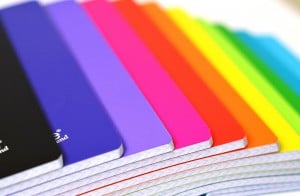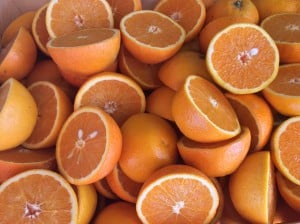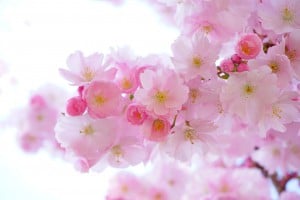
Source: Pixabay user utroja0.
There are countless stimuli in our everyday lives that can affect us in subtle ways. Sights, tastes, smells, and sounds can all trigger emotional or psychological responses on a subconscious level. But what if there was a way to control some of those stimuli and use them to our advantage?
Colors have been thoroughly researched by psychologists the world over, and different shades have been known to make us feel a certain way. With that in mind, you can use colors to create certain moods or mindsets when it comes to learning in class, studying for tests, and even taking exams. Take a look below to see how each color of the rainbow can help you gain an edge at school.
RED:

Source: Pixabay user Hans.
Red is a color of stimulation, excitement, and intensity. Since it’s lively and energetic (and bolsters courage) red is a good color to wear on days you have a class presentation. Red also gives the sensation that time is passing faster than it is, so if you have a class that drags on and on and on, try using a red notebook or folder for it.
ORANGE:

Source: Pixabay user Separatus.
Like red, orange is enthusiastic and exciting. But orange is a warmer, friendlier color that’s associated with humor and optimism. Use orange when you want to be more productive — while studying for tests or doing homework. Orange can also boost creativity.
YELLOW:

Source: Pixabay user condesign.
Confidence, friendliness, optimism, and happiness are all symbolized by yellow. It’s a color that grabs your attention and can lift your spirits. Yellow is a great color to wear if you’re giving a persuasive speech. But before you go using a yellow folder for a class that you want to focus more in, you should know that yellow can also trigger feelings of frustration, so use it wisely.
GREEN:

Source: Pixabay user nayrusfire.
If a class tends to stress you out, surround it in green. The color most commonly found in nature, green represents balance, harmony, peace, and rest. It is a reassuring color, so use it to set yourself at ease on nerve-wracking days like presentations or exams. As a bonus, researchers say that green can improve reading ability and comprehension, so if a class is text heavy, try using green folders, binders, or notebooks.
BLUE:

Source: Pixabay user PublicDomainPictures.
As the world’s leading favorite color, it’s no surprise that blue signifies a lot of meanings. Blue represents intelligence, trustworthiness, calmness, logic, communication, efficiency, and thought. With so much symbolism, blue can be used in a multitude of beneficial ways. Wear blue on test days for a psychological boost. Blue in class projects can help everyone remain on the same page. If a class calls for a lot of brainpower, blue can promote deep thinking and reflection.
PURPLE:

Source: Pixabay user WerbeFabrik.
Purple (or violet) represents wisdom. As such, it can be used to stimulate concentration, critical thinking, and philosophy. Plenty of classes require you to stretch your mind and interpret challenging concepts, so utilizing purple can give you an extra push. This color can also boost imagination and artistic skills.
PINK:

Source: Pixabay user Hans.
Known to be soothing and calming, pink is great to use in order to lower stress. It’s associated with physical comfort and warmth, making it perfect to fend off the distractions of cold during the winter or hunger right before lunch.
BLACK:

Source: Pixabay user ktuec.
Oftentimes black is associated with power, seriousness, sophistication, and clarity. Indicating professionalism and intensity, black is best used more situations like serious presentations, school meetings or interviews, and auditions. Have a class that might be a bit confusing? Black can be used to make sense of things.
WHITE:

Source: Pixabay user Larisa-K.
White might bring on feelings of innocence, cleanliness, and purity, but in an academic setting white can be used to enhance clarity, simplicity, and space. It is orderly and neat. White can also make something feel like a blank slate or a fresh start. Use white if you need to go back to the drawing board, want to organize things, or want to heighten your awareness.
The effects of these colors on our daily lives might be subtle, but they can be effective. And a little extra help never hurts. So go out and use the color scheme to your advantage!
Use College Raptor to discover personalized college matches, cost estimates, acceptance odds, and potential financial aid for schools around the US—for FREE!


